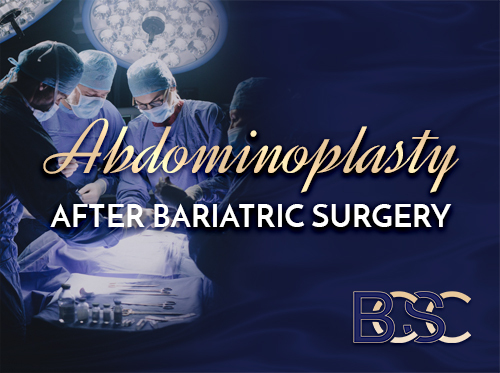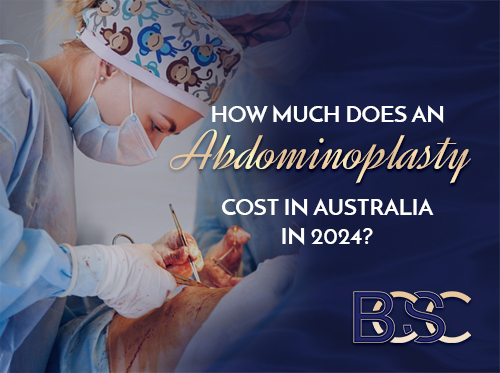Abdominoplasty vs. Lipectomy: What’s the Difference?
Many patients seek surgery to address excess abdominal fat and loose skin, particularly when diet and exercise have not produced the desired changes. Among the most common surgical options are abdominoplasty and lipectomy. While these terms are sometimes used interchangeably, they describe procedures with distinct purposes and outcomes. Understanding their differences is important before deciding which is appropriate for you.
What is Abdominoplasty?
The term abdominoplasty comes from the Latin abdominis (abdomen) and the Greek suffix -plasty (to mould or shape). An abdominoplasty is more than the removal of fat and skin—it also addresses the abdominal wall. Surgeons can repair stretched or separated abdominal muscles (diastasis recti), reshape the abdominal region, and reposition the umbilicus (belly button) when necessary. This makes abdominoplasty especially useful for patients after pregnancy or significant weight loss.
What is Lipectomy?
The word lipectomy originates from the Greek lipo (fat) and -ectomy (to cut out or remove). It refers to the surgical removal of skin and fat. Unlike abdominoplasty, which focuses specifically on the abdomen, lipectomy is a broader term encompassing many procedures that remove excess fat and skin from different parts of the body. Abdominoplasty itself is technically a form of lipectomy, but not every lipectomy includes the additional muscle repair and reshaping that abdominoplasty offers.
Types of Lipectomy Procedures
Mini-Abdominoplasty (Mini Abdominal Lipectomy)
Some patients only have a small amount of excess skin and fat below the umbilicus. A mini-abdominoplasty removes this tissue through a smaller incision, typically along the bikini line. Unlike a full abdominoplasty, it does not address the upper abdomen or involve repositioning of the umbilicus.
Full Abdominoplasty (Full Abdominal Lipectomy)
A full abdominoplasty addresses the entire abdomen. This operation is most common after pregnancy or major weight loss. It removes excess skin and fat, repairs separated abdominal muscles if required, and often repositions the umbilicus. The incision usually extends from hip to hip along the bikini line.
Extended Abdominoplasty (Extended Abdominal Lipectomy)
An extended abdominoplasty is indicated when excess skin and fat extend beyond the central abdomen into the flanks or hip region. The incision is longer than in a standard abdominoplasty, allowing the surgeon to address both the abdomen and sides of the torso.
Fleur-de-Lis Abdominoplasty (Vertical and Horizontal Lipectomy)
Massive weight loss patients often benefit from this technique. In addition to a horizontal incision, a vertical incision up the midline of the abdomen allows for more comprehensive skin removal. The resulting scars resemble an inverted “T” or the French fleur-de-lis symbol.
Belt Lipectomy (Body Lift, Circumferential Lipectomy, 360° Lipectomy)
When excess tissue encircles the waistline, a belt lipectomy may be performed. The incision runs all the way around the abdomen, enabling removal of skin and fat from the front, sides, and back. This procedure is common in patients following major weight loss and is sometimes referred to as a lower body lift.
Major Weight Loss Lipectomy
For individuals who have lost a significant amount of weight, loose skin may extend beyond the abdomen to the arms, back, thighs, and flanks. A major weight loss lipectomy addresses multiple areas of redundant skin and fat in one or more staged operations.
Brachioplasty (Arm Lipectomy, Arm Lift)
Excess skin and fat on the upper arms can be treated with brachioplasty. This procedure removes redundant tissue between the elbow and armpit. The resulting scar is typically placed along the inner arm where it is less visible.
Thighplasty (Thigh Lipectomy, Inner Thigh Lift)
Excess tissue on the inner thighs can cause discomfort, rashes, and chafing. Thighplasty removes redundant skin and fat from the thighs, helping to create a more proportionate lower body appearance.
Common Reasons Patients Consider Abdominoplasty or Lipectomy
Weight Loss
Following significant weight reduction, patients often find they are left with loose skin that does not contract naturally. Surgery can address this by removing redundant skin and fat.
Age
As collagen and elastin production decreases with age, the skin loses elasticity. This natural process may lead some individuals to consider surgery for areas of sagging skin.
Pregnancy
Pregnancy stretches both skin and abdominal muscles. While some women recover abdominal firmness on their own, others may experience separated muscles or persistent loose skin that can be surgically addressed.
Genetics
Inherited factors influence body fat distribution, metabolism, and how skin responds to changes in weight. Genetics can play a significant role in whether someone develops excess skin after weight fluctuations.
Lifestyle Choices
Smoking and excessive alcohol consumption can negatively affect skin quality and weight stability. Healthy lifestyle habits may reduce the likelihood of requiring surgery, though they cannot always prevent it.
Frequently Asked Questions
What is removed during a lipectomy?
A lipectomy removes excess skin and fat. Depending on the procedure, this may involve direct excision or the use of techniques such as suction-assisted lipectomy.
Is lipectomy the same as liposuction?
No. Liposuction (also called suction-assisted lipectomy) is less invasive and involves small incisions with a cannula to suction out fat. A lipectomy usually involves longer incisions and the removal of both skin and fat.
What is the difference between a belt lipectomy and a circumferential abdominoplasty?
These terms are often used interchangeably to describe removal of excess skin and fat around the entire torso.
What is the difference between an apronectomy and an abdominoplasty?
An apronectomy removes only a large fold of overhanging skin from the lower abdomen. An abdominoplasty includes this removal but may also involve abdominal muscle repair and reshaping of the abdomen.

